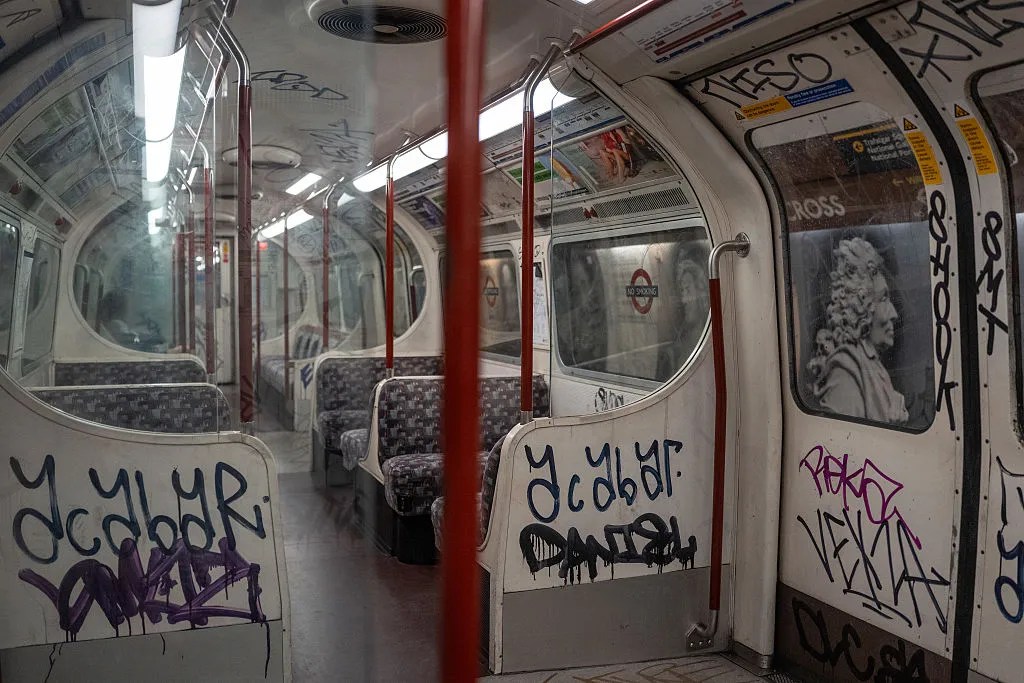Russians are, stereotypically, known as heavy vodka drinkers – a fact that is often celebrated, despite all the bodily perils it entails. What’s rather less talked about is that Russia suffers one of the worst HIV epidemics outside Africa. This is thanks, in no small part, to heroin users sharing needles. But the latest challenge to public health, aside from the meatgrinder in Ukraine, is the synthetic stimulants craze behind which lie an underworld of cyber drug cartels.
Russia’s drug problem is nothing new
The annual death toll from illicit drugs has more than doubled since 2019 to over 10,000 a year, a gruesome trend that’s likely to continue as the stress of the war eats away at Russian society and traumatised soldiers return from the battlefield.
It’s tricky to tell, for obvious reasons, precisely how much of Russia’s drug traffic flows through the dark web. But anecdotally, nearly everything has shifted from street corner sales to the internet, as documented in a new report by the Global Initiative for which I was a researcher.
Cocaine, which has to be smuggled from South America, is out-of-reach of most everyday Russians. Instead, Russian druggies have opted to make their own: mephedrone, a white crystalline powder originally developed as a pesticide by Israeli chemists, feels like a dirtier version of ecstasy crossed with the moreish cravings of cocaine that can lead to days-long “marathon” sessions with no sleep.
Make-you-own-mephedrone kits are cheaply and readily available from the dark web and DIY chemists sell their gear online and over messaging services.
‘These days, everything is produced here apart from cocaine, because it’s obviously impossible to have a coca leaf plantation in Russia,’ says Artem (not his real name), who used to manage a ‘shop’ selling drugs over Telegram. ‘But that’s the only thing that comes from abroad. Everything else is made by local chemists who sell on these very same platforms.’
Russia’s drug problem is nothing new. Cocaine was popular among high society, artistic and bohemian circles in the late 19th and early 20th centuries, including a young Mikhail Bulgakov (of The Master and Margarita). It wasn’t uncommon for actors to take drugs before walking onstage. It didn’t reach epidemic proportions, nor was it considered particularly dangerous to society at large. The few laws in place were comically lax: if someone overdosed on a pharmacists’ cocaine, the druggist responsible merely had to repent in church. But by the early 1920s, coked-up street orphans had become a visible menace, and many doctors, surgeons and soldiers had picked up a morphine addiction while serving in the Civil War. The Bolsheviks sought to stamp out narcotic inebriation as a symptom of capitalist decadence.
While the USSR was leftist in a fiscal sense, it was also deeply socially conservative. Free thinking was discouraged. Yet a small cohort of Soviet hippies continued to exist. Inspired by rock n’ roll and eastern philosophy, they sought to free their minds by smoking grass, brewing opium tea and huffing on cleaning fluid.
‘An important moment in psychedelic history came when the Leningrad kids brought Sopals, which was a washing chemical produced in Riga,’ recalled Vladimir Wiedemann, a veteran hippy from Estonia. ‘There’s this sweet smell…You start breathing it in and you feel out of it. It sends you flying on an adventure to other worlds. I’d say it’s even cooler than LSD. That’s what we called it: Soviet LSD. There was a kind of mysticism around it; we used to hold group seances.’
During the 1980s invasion of Afghanistan, bored Red Army conscripts bartered their fuel, weapons and ammo – often the same bullets that would be fired back at them – for opium and hashish. Returning soldiers brought the habit back with them. When communism collapsed in the chaotic years of the 1990s, life expectancies plummeted as people lost their jobs and basic social institutions crumbled, leaving a vacuum filled by heroin.
Yekaterinburg’s Roma village was at the heart of the heroin economy; smack was sold there more-or-less openly. In 1999, hundreds of heavies clad in black leather jackets parked inside the settlement and stood in intimidating silence. Affiliated to a local mafia gang and led by an ex-convict who later became the mayor, the vigilantes called themselves City Without Drugs. These men kidnapped addicts and chained them to their beds as they underwent withdrawal. It’s uncertain that their dubious methods worked.
Being a connoisseur of politically-incorrect pick-me-ups became particularly risky in Russia, where law enforcement left the druggie community thoroughly paranoid: you never knew if that friend passing you a roll-up was trying to incriminate you to get himself off-the-hook from the cops. But most young Russians were cyber-savvy. Several message boards appeared in the untamed prairies of the internet during the late 1990s and early 00s. These were not only places to share information and stoned thoughts, but became increasingly professionalised trading platforms for “shops” selling every mind-bending chemical under the sun. In the two decades since, they’ve become more akin to traditional narco-mafias, aggressively expanding and monopolising their territory and even dispatching tracksuit-clad enforcers to dispense street justice to untrustworthy associates. As the Global Initiative notes, online Russian drug syndicates have now found footholds beyond the old Soviet empire as far abroad as Sri Lanka.







Comments